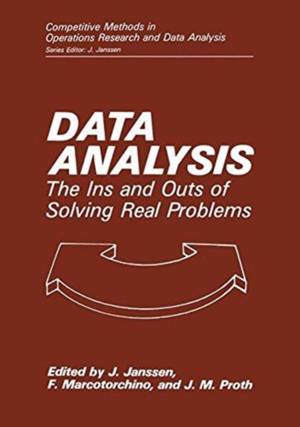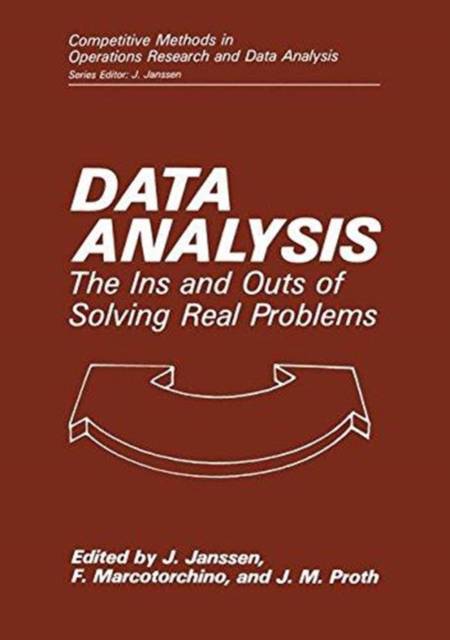
- Afhalen na 1 uur in een winkel met voorraad
- Gratis thuislevering in België vanaf € 30
- Ruim aanbod met 7 miljoen producten
- Afhalen na 1 uur in een winkel met voorraad
- Gratis thuislevering in België vanaf € 30
- Ruim aanbod met 7 miljoen producten
Zoeken
€ 100,95
+ 201 punten
Uitvoering
Omschrijving
This book is the result of the fourth International Symposium on Data Analysis held on June 1985 at the Universite Libre de Bruxelles with the help'of the European Institute for Advanced Management. As the preceding ones, the organization of the Symposium started with a call for real life problems from which an International Com- mittee selected six topics and asked for several solutions. These topics are: I) Multivariate and longitudinal data on growing children 2) Prehistoric assemblages and lithic artifacts from a small We- european area 3) A comparison of results of European elections 4) Classification of heterogeneous data related to microcomputers 5) Group technology in production management 6) Juvenile gelinquency They are covered by the S1X chapters of this book in the following systematic way: a) firstly, a presentation of the problem is given in the original context of the relevant discipline (Medicine, archaelogy, politics, marketing, production and education); b) Secondly, we present the solution found by people who presents the problem; c) thirdly, we find the other retained solutions among the most significative ones; v vi PREFACE d) finally, a short conclusion compares the different approaches. The diversity of the six selected problems clearly shows that Data Analysis can be used for solving a wide variety of problems. Moreover, the fact that each problem is approached by several dif- ferent way - at least two - also shows that, in general, a "univer- sal" statistical method does not exist.
Specificaties
Betrokkenen
- Auteur(s):
- Uitgeverij:
Inhoud
- Aantal bladzijden:
- 381
- Taal:
- Engels
- Reeks:
Eigenschappen
- Productcode (EAN):
- 9780306426124
- Verschijningsdatum:
- 30/09/1987
- Uitvoering:
- Hardcover
- Formaat:
- Genaaid
- Gewicht:
- 849 g

Alleen bij Standaard Boekhandel
+ 201 punten op je klantenkaart van Standaard Boekhandel
Beoordelingen
We publiceren alleen reviews die voldoen aan de voorwaarden voor reviews. Bekijk onze voorwaarden voor reviews.








